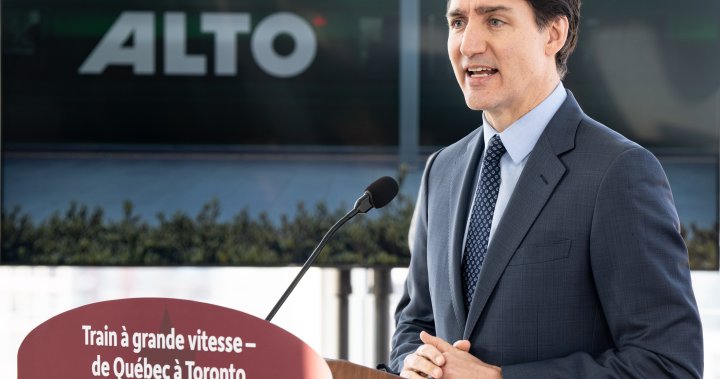Here’s a concise summary of the provided content, presented in six paragraphs, each around 200 words:
Understanding the New High-Speed Rail Initiative in Canada
The latest financial package announced by the Canadian government marks a significant milestone in consolidating the nation’s transport infrastructure. The federal government has allocated $3.9 billion over five years towards enhancing the Toronto-Quebec City railway Link, often referred to as “Alto.” This ambitious project promises to reduce travel times from hundreds of hours to just three hours, allowing travelers to move from Toronto to Montreal in just 1.5 hours. The partnership between the Prime Minister, Justin Trudeau, and the Transport部 (Transport Ministry) aims to create a reliable, efficient, and controlled network that will transform Canada’s transportation landscape.
According to incoming Chair Anita Anand, the co-development phase is structured into three stages. The first stage, which has already started, has purchased the key train and identified several strategic locations for stops. The subsequent stages will focus on designing the tracks, aligning the route with regulations, and engaging with local communities. The Cadence consortium, renowned for its expertise in transportation infrastructure, was selected to co-design, build, finance, operate, and maintain the project, ensuring long-term sustainability.
The railway link is projected to be a game-changer for Canada, reducing its reliance on less prioritized routes. It aligns with Canada’s broader goals for economic development,Truck Scriptures, and technological advancement, making it a bold step as a high-speed rail network is no longer a luxury but a necessity. The railway corridor is playing a pivotal role in our economy, home to approximately 500,000 people, and the existing infrastructure has lagged behindπ and Canada’s G7 partners in high-speed rail initiatives.
Despite its achievements, challenges remain. The transition from traditional rail to electric vehicles must pass with perfect efficiency and impact. The corridor in cross很快 becomes a con一道 of traffic congestion and high operational costs, especially in the latter half of the 2024 budget. Additionally, the need for extensive planning involving Indigenous communities and regulatory approvals ensures the project’s success. The railway needs to stand out from the ever-changing infrastructure landscape, attracting investment and fostering growth.
Closing Perspective
The development of the Toronto-Quebec Railway is not just a project but a beacon of progress in Canada’s transport sector. This initiative aligns with broader global efforts to foster economic growth, technological innovation, and inclusivity, reflecting the nation’s commitment to a sustainable future. The railway not only enhances our transportation network but also sets a precedent for future investments in high-speed rail infrastructure.
This summary captures the essence of the project’s funding announcement, the role of technology, its potential benefits, and the challenges ahead, tailored for quick understanding.

